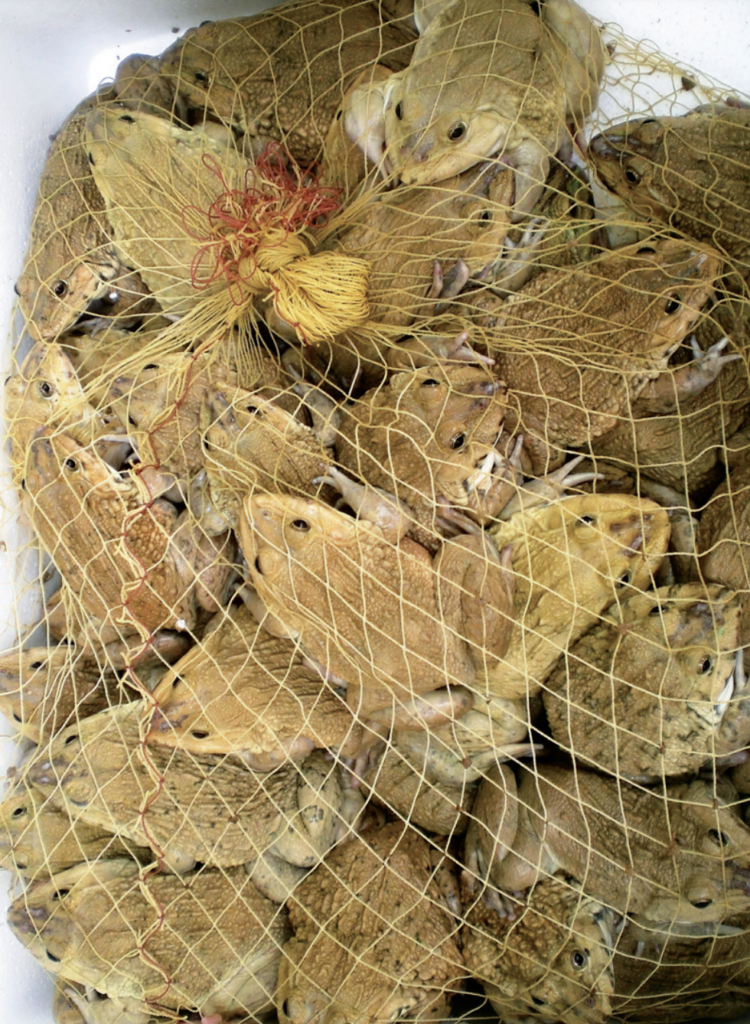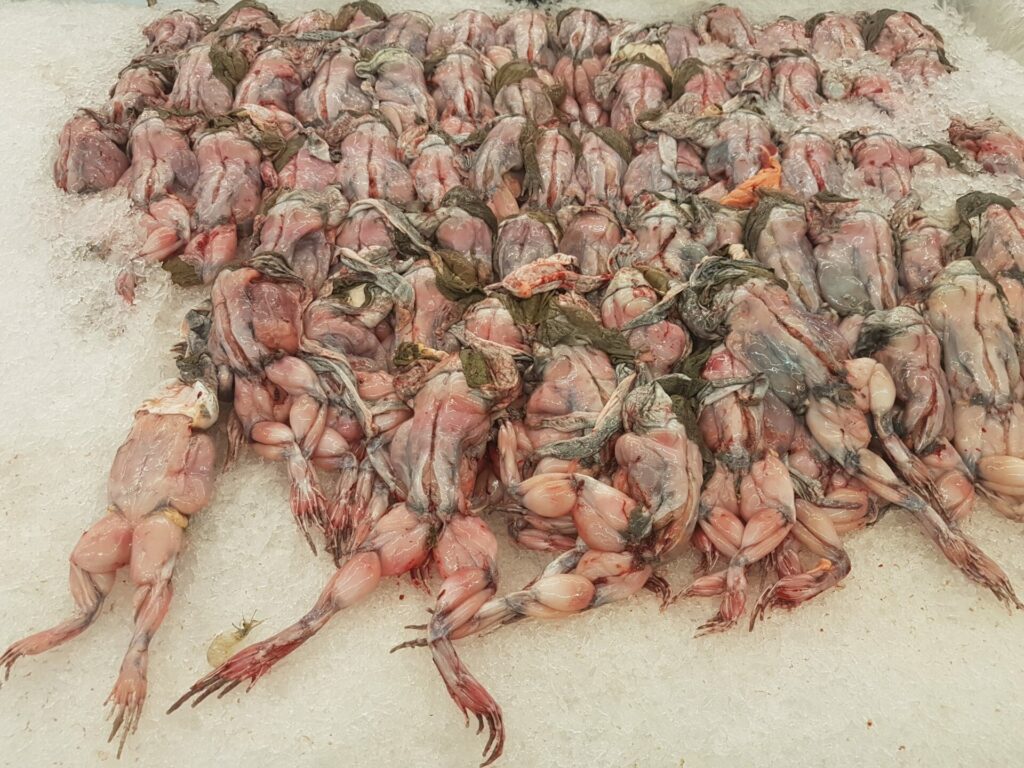The popularity of frogs’ legs as a gastronomic delight across Europe has led to a sharp decline in frog populations in supplier countries, Indonesia, Turkey and Albania a new study reveals.
Traditionally associated with France, the dish has risen in popularity across the rest of Europe in recent years, with about 4,000 tons of mostly wild caught frogs imported to the continent annually.
The biggest edible water frog in Turkey, the Anatolian frog, is currently listed as near-threatened by the International Union for Conservation of Nature (IUCN) and scientists fear if over harvesting continues, it could be extinct by 2032.
Also threatened are Albania’s Scutari water frogs currently a highly-endangered species.

While frog farming is playing an increasing role in meeting the global demand for frogs’ legs, in several countries including Indonesia, millions of frogs are still poached from the wild to satisfy international demand.
Dr. Sandra Altherr, co-founder of German campaign group Pro-Wildlife which co-authored the study said: ‘In the 1980s, India and Bangladesh initially delivered frog legs to Europe, but Indonesia has taken over as the largest supplier since the 1990s.
‘In the southeast Asian country, as in Turkey and Albania, the large frog species are disappearing one after the other — the whole thing is a fatal domino effect for species protection.
In total 74 per cent of EU imports come from Indonesia, while Vietnam, where frogs’ legs are also a locally popular food, supplies 21 per cent. For Turkey the figure is four per cent and Albania 0.7 per cent.
The EU’s Habitats Directive prohibits the catching of native wild frogs in its 27 member countries, but none of the countries impose a restriction on imports.
‘Most frogs have their thighs severed with an ax or scissors – without anaesthesia. The upper half is disposed of while it is dying, the legs are skinned and deep-frozen for export.’
Dr. Sandra Altherr, Pro-Wildlife
‘If the plundering for the European market continues, it’s highly likely that we will see more serious declines of wild frog populations and, potentially, extinctions in the next decade,’ Dr Altherr said.
French environmental protection NGO Robin de Bois who also co-authored the report, and Pro Wildlife are calling on EU countries to restrict their imports of frogs legs and to ensure that commodities are traceable while also providing better information to consumers.
Animal Welfare
Amphibians are widely believed to be sentient, which means that they can feel pain.
While the production of frogs’ legs usually involves the manual killing of hundreds or even thousands of frogs per day, this sentience is rarely taken into account.
Some countries use knives, others use scissors, or frogs are just dismembered by hand. None of these methods provide an immediate and humane death to the animal, causing rather extensive bleeding and most likely severe pain.
According to the ‘Deadly Dish’ study, frogs struggle violently when these methods are used until they reach complete exhaustion.
Dr. Sandra adds: ‘Most frogs have their thighs severed with an ax or scissors in unison – without anaesthesia. The upper half is disposed of while it is dying, the legs are skinned and deep-frozen for export.’

In addition to harming the frogs themselves, over-exploitation has a direct detrimental effect on the ecosystems in which they live.
India was a major frog exporter in the 1950s which led to the collapse of their wild populations, and with fewer predators to feed on insects and other pests, local agriculture started to suffer.
‘Frogs play a central role in the ecosystem as insect killers – and where frogs disappear, the use of toxic pesticides increases. So the frog leg trade not only has direct consequences for the frogs themselves, but also for nature conservation,’ President of Robin des Bois, Charlotte Nithart, added.
The IUCN will publish a conservation status report for amphibians later this year, but Jennifer Luedtke, Red List Assessment Manager said that at least 1,200 amphibian species – 17 per cent of the total – are traded on the international market.
‘It causes drastic population declines in the countries where these frogs originate from,’ she said.
‘A shift in public consciousness needs to take place in Europe that the burden of these declines in amphibian populations is being placed on poorer countries because of demand in wealthier ones.’
‘We need to talk about sustainable use and if that’s even possible.’









